To my other GT6 pages
December 15, 2022
Starter Solenoid
There aren't many parts left in the boxes I filled up when disassembling
this car, but I did come up with the starter "solenoid". I put
"solenoid" in quotes because I believe it's technically a misnomer for
this part.
Though the word solenoid can refer to just an electromagnet, it is more
often reserved for an electromagnet assembly designed to actuate some
mechanical arrangement. An electromagnetic device mounted on or in
the body of a starter that physically engages the starter gear with the
ring gear (in addition to making a high current electrical connection)
would properly be called a solenoid in my opinion. But if it just
operates electrical contacts, it's a relay (or "contactor" for higher
currents), and not a solenoid.
However, since the device is almost universally called a solenoid by our
LBC suppliers, and so also by most owners, I'll bow to the popular
usage.
In my research, I found that these devices are easily available, and not
that expensive. However, in keeping with the spirit of this
project, I took a close look at my original. My solenoid was dirty
and rusty in places, but it seemed to work fine, so I didn't see much
reason to think about a replacement. My job was just to make it
look better cosmetically.

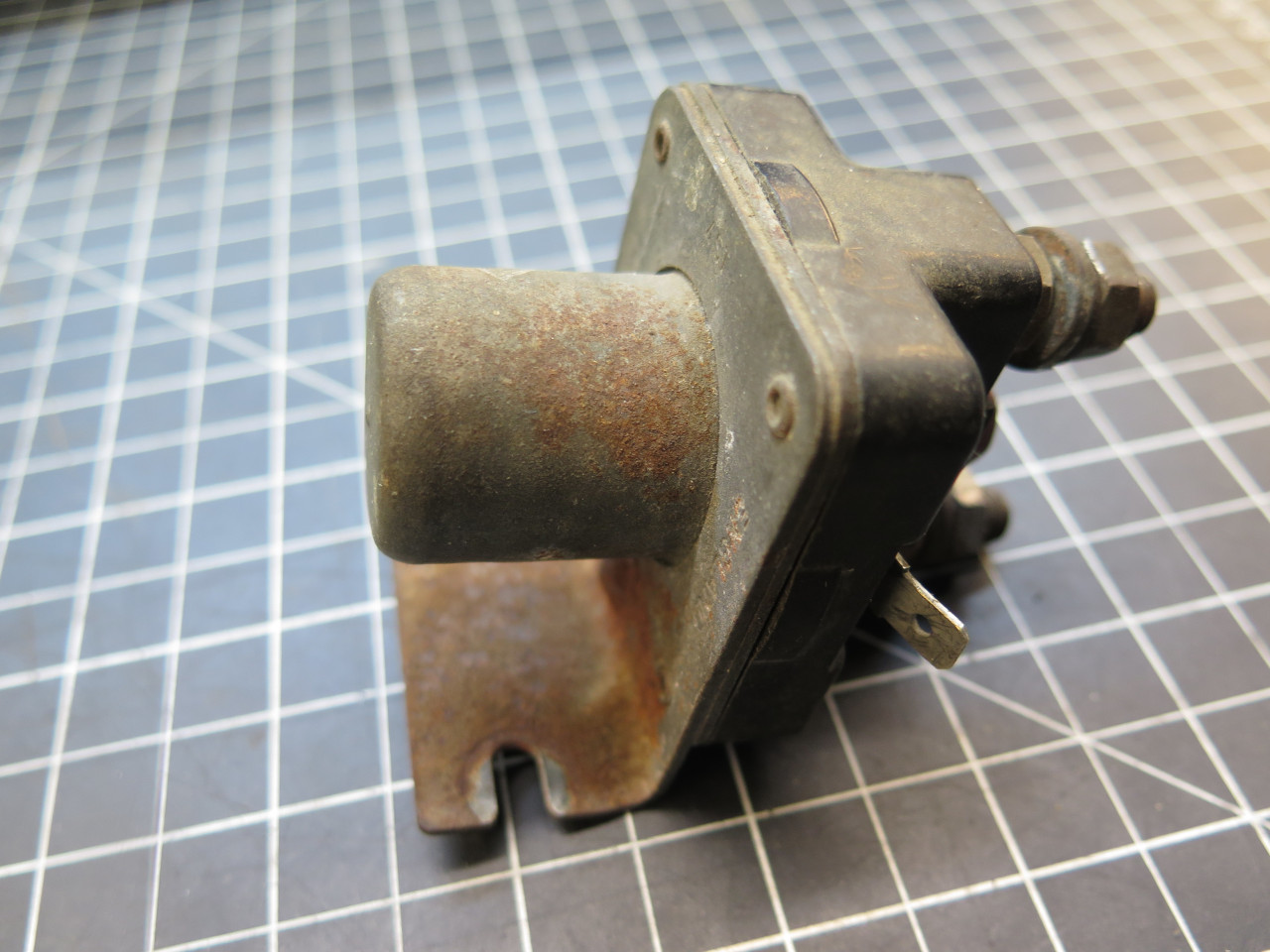
All of the rust was confined to the mounting bracket and the coil
housing. Those were both liberated by drilling out four rivets.

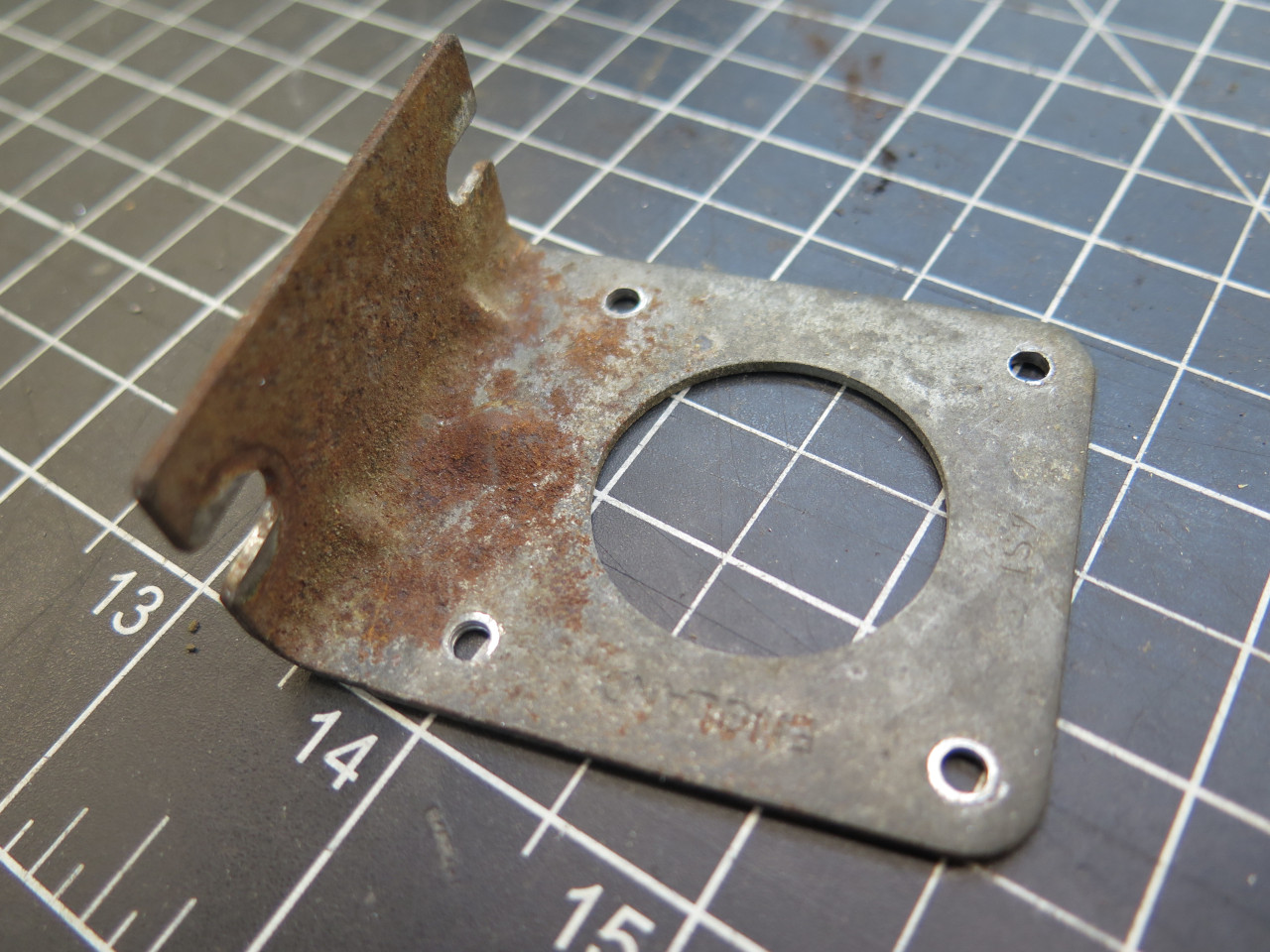
The parts were originally zinc plated, but an acid bath removed the rust
along with the remaining zinc. New zinc and chromate made them
look a lot better. The shallow pitting left by the rust doesn't
really bother me as long as the new zinc covers it completely.
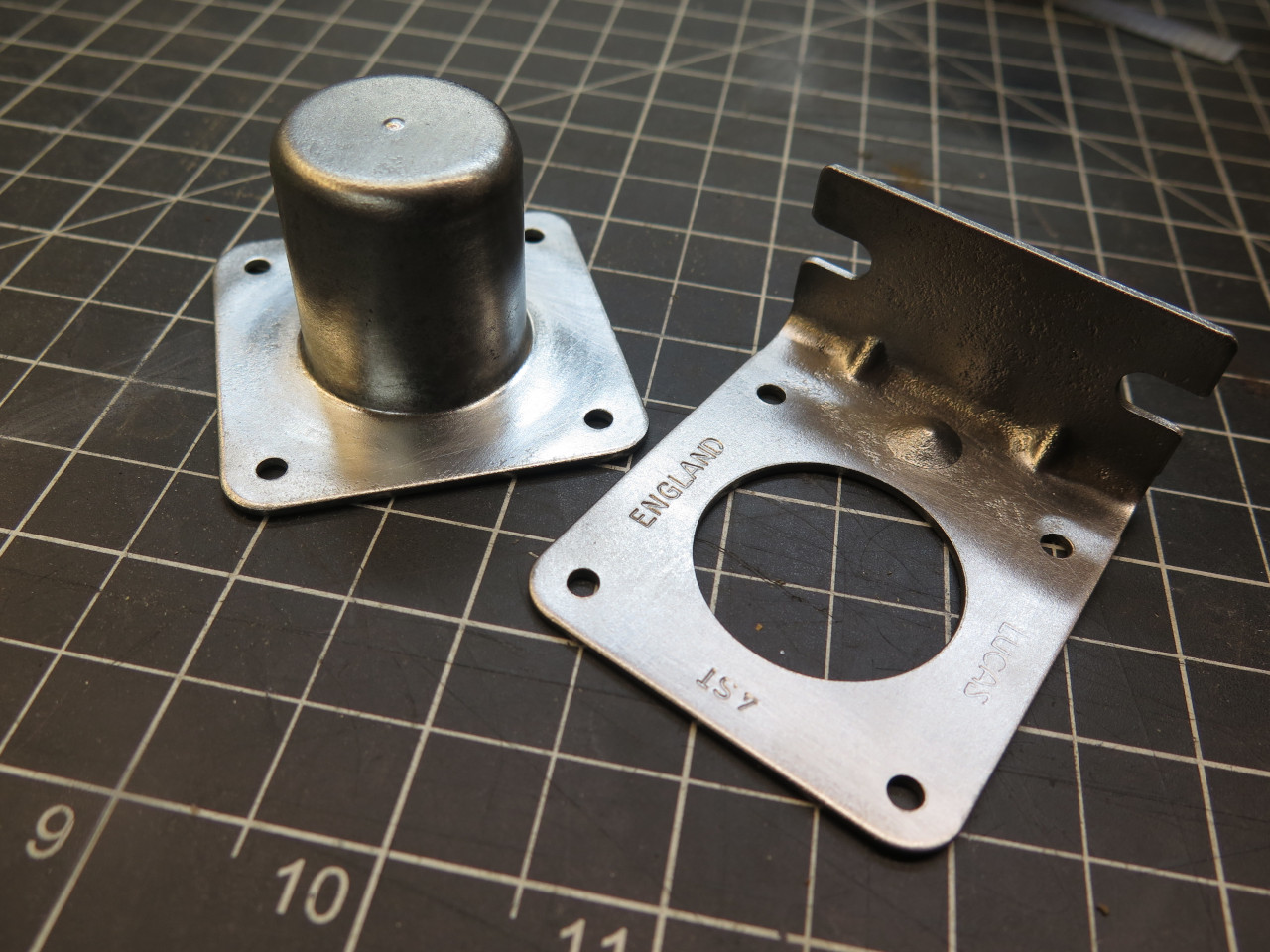
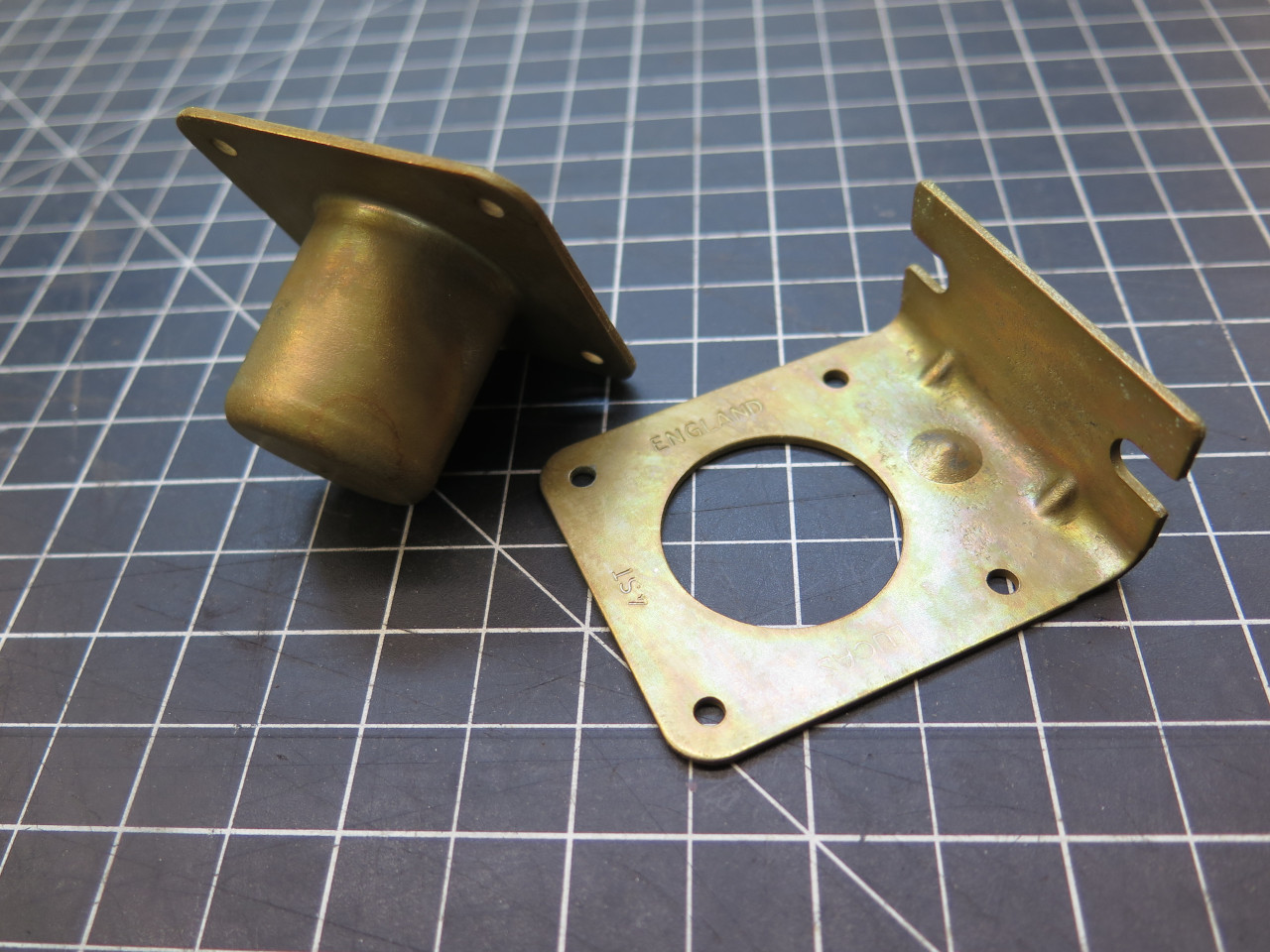
Really nothing else to do before putting her back together.

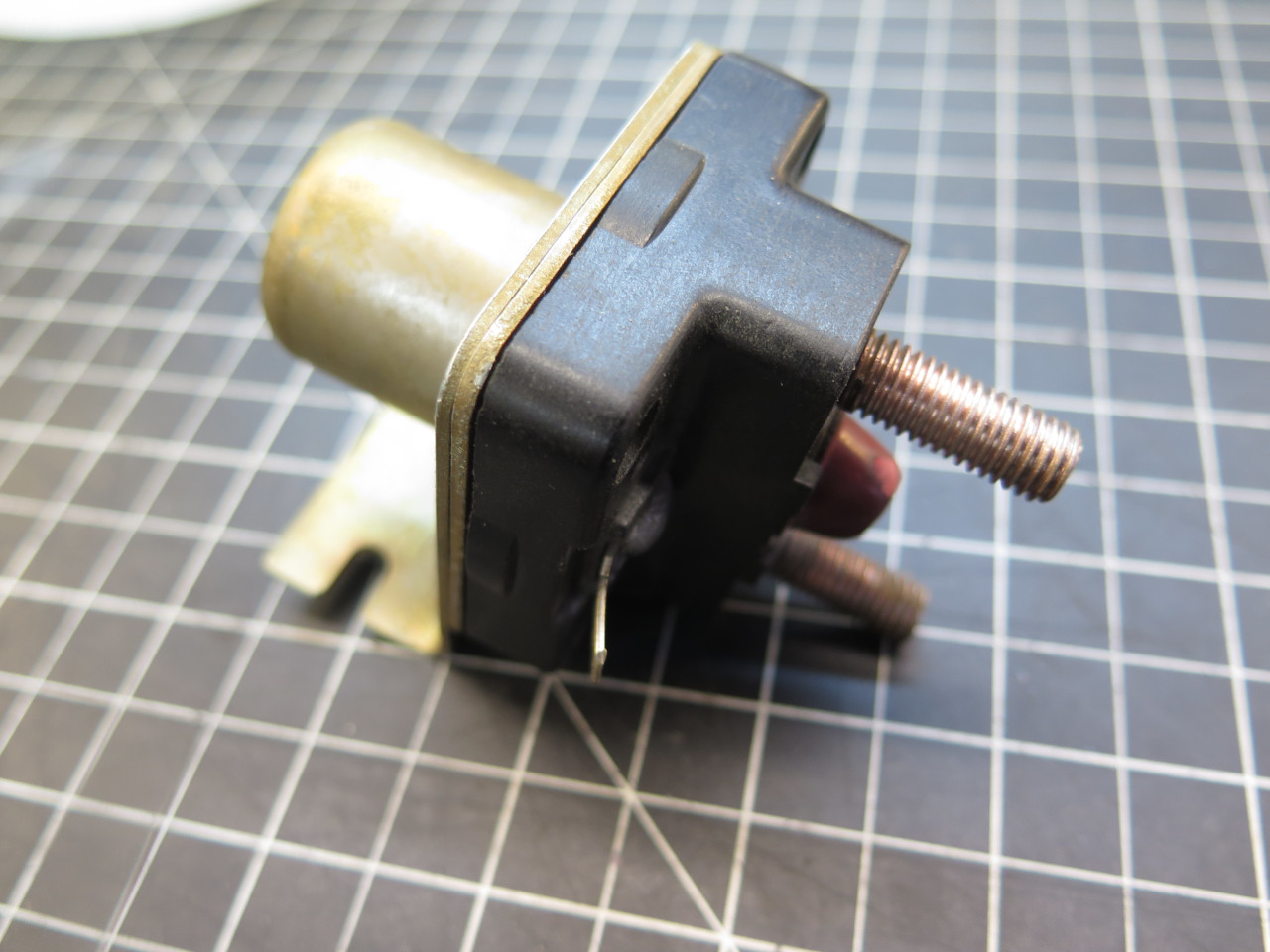
I took a look at the nuts and washers that were on the copper
studs. Oddly, the star and lock washers appeared to be copper or
brass, but the nuts looked like steel. Checking with a magnet, I
found they were all steel, and the washers were just copper
plated. This was mildly disappointing, since I really prefer
fasteners on electrical contacts, especially those carrying large
currents, to have good conductivity, not to even mention the dissimilar
metals issue.
So, I thought, I think I'll just go get me some 5/16-24 brass nuts and washers to match. So that's what I did.
Then, tragedy struck. The nuts didn't seem to want to go on to
those studs. They started, but bound up right away.
Well, it turns out that the designer of his part saw fit to use not
5/16-24 studs, but instead 5/16-22 studs. 5/16-22 is actually a
British standard, BSF.
So now my problem was to find some 5/16-22 brass nuts. I could get
them from the UK, but shipping and delay made that option
unattractive. A couple of things I COULD easily get in the US
though, were a 5/16-22 tap, and some 1/2" brass hex rod.

Ready for show time...

I like these little low-risk projects. Even the drama with the
nuts wasn't that stressful. The brass rod and the tap came to less
than the cost of a new solenoid (which may not even include brass
nuts).
Comments to Ed at elhollin1@yahoo.com
To my other GT6 pages